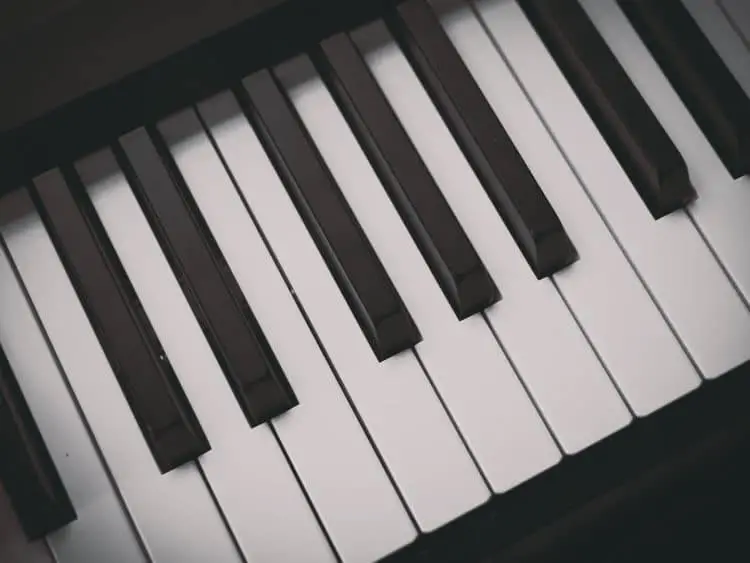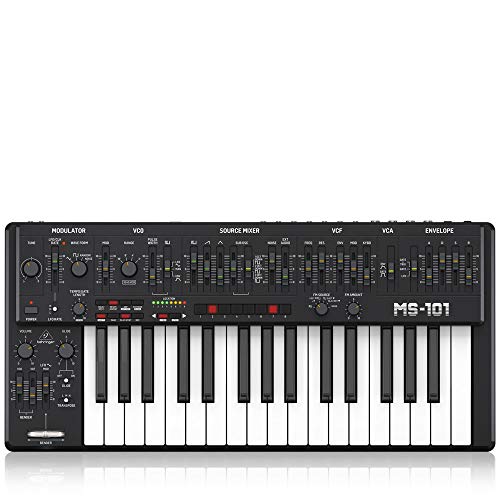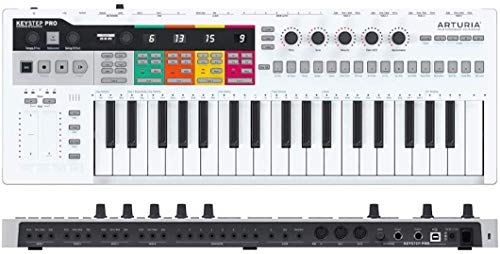Although it can be fun to play around with a MIDI keyboard and a DAW to create sounds, sometimes you want to be creative locally. The best instrument for that job is a sampler or synth that comes with dedicated keys.
When you’re ready to take your music to the next level, a sampler or synth with a dedicated keyboard delivers more control over the final sound. You can add depth, bass, rhythm, and more with this tool.
The market is fading fast for these tools because computer-hosted libraries and DAW virtual instruments are much easier and cheaper to use.
If you have a gig or want to practice without the software, this option is still the best one to have around.
Is There a Sampler or Synth With a Dedicated Keyboard?
A synthesizer is an electronic instrument generating audio signals that replicate different sounds. Samplers are digital or electronic devices that use recordings of real horns to create loops and rhythms. Both of them have control option designs that include keys.
A sampler can record natural sounds with an attached microphone. Once the recording is secured, the equipment can convert it for a useful sample or waveform.
When a dedicated keyboard is with the equipment, that audio clip can get assigned to a specific key.
That means you can map all of the keys to different pitches of the same sound or incorporate other audio signals to each one.
When you have a synthesizer, you’re using a collection of audio creation and processing modules. This instrument imitates others with real-world sounds, ranging from trumpets to vocals.
If someone plays the keys on the keyboard, you’ll hear different pitches using the same note sequences as a piano.
Synthesizers can connect to computers and laptops by using MIDI (Musical Instrument Digital Interface) ports. When a key gets struck, the information goes to the PC and the DAW, if you have one running.
Since samplers usually include synthesizer components and circuitry to modify envelopes, filters, LFOs, and more, the line between the two instruments is sometimes blurred.
What Are the Best Samplers or Synths with Keyboards on the Market Today?
If you want the flexibility of working with keys while making music with a synth or sampler, here are the best options you’ll find available right now.
1. Moog Grandmother Semi-Modular Analog Synth
When you want to work with only the best, you’ve got to give the Moog Grandmother a closer look. It provides numerous tools to help embrace your creativity through its virtually unlimited sonic options.
You can keep reconfiguring the front panel to deliver whatever audio is needed to complete your masterpiece.
| Pros of the Moog Grandmother | Cons of the Moog Grandmother |
| It is a semi-modular design, which means you don’t need to worry about any patching. | If you want massive frequency-modulated sounds, other options from Moog provide better results. |
| The synth works with DFAM, Eurorack modulars, Mother-32, and other systems. | The pitch range has a strict limit to it that you can’t bend far above to create specific leads that you might want to have in your music. |
| Your power adapter works with 100 to 240 volts AC. | It needs you to treat it gently when working, which means there is the possibility that it could break during use. |
| The hardware spring reverb is useful for processing external sounds to incorporate into the composition. | Some musicians may find it to be something more of a monosynth than what they need to use it for in their applications. |
| It includes a sequencer and arpeggiator that are simple and straightforward to use. |
If you don’t mind accessing some of the best features through software when using a synth with a keyboard, you’ll appreciate what the Moog Grandmother brings to your creative efforts.
2. Behringer Synthesizer MS1BK
When you select this synth with a keyboard, you’ll get a pure analog signal path.
It uses a similar style as the traditional VCA, VCF, and VCO designs to provide a classic performance for your upcoming composition.
You can even modulate it with LFO, keyboard tracking, and ADSR to maximize flexibility.
| Pros of the Behringer Synthesizer MS1BK | Cons of the Behringer Synthesizer MS1BK |
| This design stays true to the original formats from the brand, improving the sound-shaping capabilities while increasing the number of effects and lead tones available. | This synth doesn’t have the same character as the SH-101, but it doesn’t try to be a direct clone. Some users may find it feeling like a monosynth. |
| It delivers an impressive bass that sounds well-rounded and expressive instead of getting filled with distortion. | It has a heavy build that can make it a little bulky when you need to travel some with your equipment. |
| The envelope generator allows you to craft the sounds to exact specifications so that you can own the stage. | The analog recreations don’t always transfer well to a DAW when you perform a direct recording. |
| It comes with a pitch bend wheel, guitar strap, and handgrip area to maximize the unit’s playability. | It comes with plenty of metal in the design, so you’ll need to avoid having it stay in direct sunlight for extended periods. |
You’re not getting something luxurious or fancy with the Behringer Synthesizer MS1BK. It’s a no-frills approach to music creation that lets you add reverb, delay, and other effects without any patch memory.
3. Native Instruments Komplete Kontrol S61
If your goal is to play virtual instruments through your DAW and you need some light synth effects, consider investing in this smart controller.
It uses professional quality Fatar keybeds with aftertouch technology to ensure you receive an accurate response when playing each note.
The primary issue with the Native Instruments Komplete Kontrol S61 is its learning curve for the advanced features.
It takes some time to get to know the software menus and various controls, which means you might not be recording or editing for a couple of weeks (or more!) after receiving the product.
If you have patience with it, you’ll appreciate what it can do.
| Pros of the Native Instruments Komplete Kontrol S61 | Cons of the Native Instruments Komplete Kontrol S61 |
| It provides ergonomic mod and pitch wheels to maximize the customization of each note. | The resale market for this specific synth isn’t very strong. |
| Users have access to several pre-mapped instruments on the keyboard, along with hundreds more through the NKS protocols that other manufacturers provide. | When you combine that with the upgrades you need for it and your DAW at times, it might price some users out of the market. |
| There is complete VSTi support, although it does need macOS 10.12 or above, 4 GB RAM, and an Intel Core i5 at a minimum. | Its hardware can be a little finicky, especially when your connections have recently gone through a firmware update. |
| The layout provides access to 61 keys, allowing for expressive performances across multiple octaves without requiring separate takes. | Older DAW packages aren’t usually compatible with the mixing and editing features that come with this instrument. |
| It integrates with Logic, Ableton, GarageBand, and Maschine for editing, mixing, and more. | The lighting feature incorporated into the unit doesn’t always have the same build quality as the keys and audio wave production features. |
4. Novation 49SL Mk III
When your goal is to own an instrument that combines the attributes of a synth and sampler in a straightforward package, you’ll want this Novation product.
It delivers sequencing attributes and several tools that let you control your entire setup with secure connections, even if you don’t have a computer.
Although the Novation 49SL Mk III only provides 49 keys, it still delivers a straightforward playing experience that you’ll love.
When you include the 16 velocity-sensitive RGB pads, you’ve got a fantastic deal on a synth with keyboards that can last for a long time.
| Pros of the Novation 49SL Mk III | Cons of the Novation 49SL Mk III |
| It’s one of the few instruments at this price range that offers MIDI hardware and CV/Gate synths together in the same package. | Some DAW programs don’t always have the keys register appropriately when using this instrument. |
| The design enables musicians to integrate the new hardware into their preferred DAW quickly. | There isn’t much for iOS compatibility when using this product for music creation. |
| It provides a controller option if you’re running Ableton on your current PC. | The light-up keys eventually burn out with use, leaving gapping issues unless you take the time to fix the problem. |
| You’ll receive one routable clock for the entire system to ensure everything works together, ranging from the eight-track sequencer to the arpeggiator that has adjustable length and sync rates. | Its design uses semi-weighted keys, which means you can’t press them with speed or intense pressure. |
| If you do, clacking sounds occur and can get picked up with a direct recording. |
5. Arturia KeyStep Pro
The Arturia KeyStep Pro is an entry-level keyboard-synth combination that makes learning fun for new musicians. It has enough features to create fun recordings or discover audio forms while including the benefits of a drum sequencer.
The Arturia Keystep Pro has more connectivity than the average person needs for a single setup.
You’ll need to read the manual to ensure the setup process is managed correctly, but the price is spot on for what it can do.
| Pros of the Arturia KeyStep Pro | Cons of the Arturia KeyStep Pro |
| Users receive a MIDI, USB, and CV connection set with this product, making it a versatile keyboard controller. | The keyboard is relatively small, only offering 37 keys to use with the controller. |
| A 16-track drum sequencer comes built-in with the unit. | It doesn’t provide a full-size key, which means some people might have some placement issues with the product. |
| Aftertouch tech creates more note variation for each composition. | The four-track polyphonic sequencer has some limitations if you want a complex arrangement. |
| Several sequencing options are available with the design, including arpeggiation, randomization, and chord modes. |
Why Choose a Sampler or Synth With a Keyboard Controller?
After creating and producing several albums through a 100% MIDI interface, I can tell you with certainty that the synth/sampler with keyboard controller option is your best choice. The time you save with the mixing and editing work through this equipment is massive.
When I worked on a recording in 2014 with a DAW editor and a MIDI keyboard only, it took over 160 hours to master everything once the recordings were complete. Last year, I was able to do similar work in just under 50 hours.
For me, that means the investment pays for itself on your first EP or LP. Even if you want to experiment with uploads or build an audience on social media, the organic followers you get who love your sound are more valuable than a few CPC clicks from online ads.
If you want to take your composing and recording seriously, grab one of these items today. You won’t believe how much your musical universe will expand!






